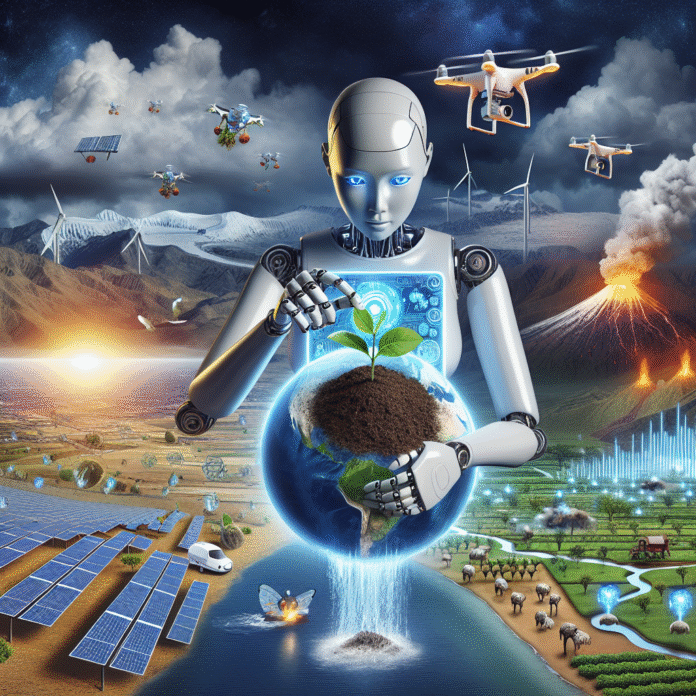The Role of AI in Climate Change Solutions: Can Technology Save the Planet?
As the effects of climate change become increasingly evident—ranging from rising sea levels to unprecedented weather patterns—governments, organizations, and individuals are seeking innovative solutions. Among these, artificial intelligence (AI) stands out as a promising tool that has the potential to transform how we combat climate change. This article explores the various roles AI can play in addressing this global crisis and examines whether technology can indeed save our planet.
Understanding Climate Change
Climate change refers to long-term alterations in temperature, precipitation, wind patterns, and other elements of the Earth’s climate system. Human activities, particularly the burning of fossil fuels, deforestation, and industrial processes, have accelerated these changes. The resulting environmental degradation adversely affects biodiversity, ecosystems, and human societies, demanding urgent solutions.
AI: A Game-Changer in Climate Action
AI technologies—including machine learning, data analytics, and predictive modeling—provide innovative approaches to understanding and addressing climate change. Here are several ways AI can contribute:
1. Predictive Analytics and Modeling
AI can analyze vast amounts of climate data to develop predictive models that forecast future climate conditions. These models can assist policymakers in making informed decisions about resource management, urban planning, and disaster preparedness. For example, AI can predict the likelihood of extreme weather events, enabling communities to take proactive measures.
2. Energy Optimization
One of the most significant contributors to greenhouse gas emissions is the energy sector. AI algorithms can optimize energy consumption in buildings, industries, and power grids. Smart grids empowered by AI can balance energy supply and demand, improving efficiency and integrating renewable energy sources like solar and wind power. AI can also facilitate the operation of electric vehicles, contributing further to reduced emissions.
3. Agriculture and Land Use Management
AI can enhance agricultural practices by optimizing water usage, predicting crop yields, and reducing the need for chemical fertilizers and pesticides. Machine learning models can analyze soil health, weather patterns, and crop types to recommend best practices for sustainable agriculture. This not only helps reduce the carbon footprint of farming but also ensures food security.
4. Carbon Capture and Monitoring
Innovations in AI can improve carbon capture technologies, which are essential for reducing atmospheric CO2 levels. AI systems can optimize the efficiency of these technologies and help monitor carbon emissions in real-time, holding industries accountable for their environmental impact.
5. Biodiversity and Ecosystem Conservation
AI is invaluable in monitoring ecosystems and wildlife. Through image recognition and drone surveillance, AI can track species populations, detect illegal poaching, and assess habitat changes. These insights are critical for conservation efforts and restoring biodiversity, both of which are vital for climate resilience.
Challenges and Considerations
While AI offers numerous solutions to combat climate change, several challenges must be addressed:
-
Data Quality and Availability: Effective AI solutions depend on high-quality data. In many regions, especially developing countries, data may be sparse or unreliable.
-
Ethical Concerns: The deployment of AI can raise ethical questions, particularly related to privacy, surveillance, and potential job displacements.
-
Carbon Footprint of AI Technologies: Ironically, the technologies needed to run AI systems also consume significant energy. Efforts must be made to ensure that AI solutions do not contribute to further emissions.
-
Accessibility and Equity: Not all countries or communities have equal access to AI technologies. It’s crucial to ensure that the benefits of AI in climate action are distributed equitably.
Conclusion: A Techno-Optimistic Future
AI holds immense promise in the fight against climate change, offering innovative solutions across multiple sectors. However, for technology to truly save the planet, a collaborative effort is required—joining the expertise of scientists, technologists, policymakers, and communities around the world.
By investing in ethical AI practices, improving data availability, and ensuring equitable access to these technologies, we can harness the power of AI to foster a sustainable future. While technology alone cannot solve the complex challenges of climate change, it is indeed a vital tool in our collective toolkit. The question is not whether technology can save the planet, but how we choose to use it. The time to act is now.






